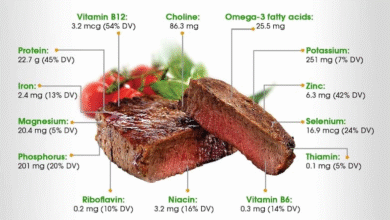Nitazenes: A Deadlier Opioid Threatening Public Safety

Nitazenes are a dangerous class of synthetic opioids that have emerged as a significant threat in recent years, contributing to a troubling rise in overdose deaths. Initially developed as pain relievers in the 1950s, nitazenes were never approved for medical use due to their high potential for overdose. Since their appearance on the illegal drug market around 2019, especially in North America, these powerful substances are increasingly being trafficked alongside fentanyl and other opioids. The most notorious variant, isotonitazene, is reported to be far more potent than both morphine and fentanyl, highlighting the serious risk of fatal overdoses associated with their use. As authorities crack down on existing opioid alternatives, nitazenes have swiftly taken their place, making them a growing concern for public health and safety amidst the ongoing opioid crisis.
In recent discussions surrounding the opioid epidemic, alternative terms such as “synthetic painkillers” and “illicit benzimidazole opioids” frequently arise, as these substances represent a new wave of dangers in drug misuse. These potent compounds, frequently linked to skyrocketing overdose rates, have prompted authorities to focus on enforcement against their trafficking, reminiscent of past struggles with substances like fentanyl. As professionals caution about their alarming presence across various regions, highlighting their association with drug trafficking and emerging market trends, it becomes clear that awareness and preventive measures are crucial. The formidable strength of these synthetic compounds raises major concerns regarding dependency and misuse, further complicating existing public health crises. Understanding the nuances of these synthetic opioids is vital for effective intervention and education, ensuring that communities can respond proactively to this evolving threat.
Understanding Nitazenes: A New Class of Synthetic Opioids
Nitazenes represent a formidable new category of synthetic opioids that have emerged in recent years, particularly shocking healthcare professionals due to their extraordinary potency. Initially developed in the mid-20th century, these compounds were shelved due to concerns over their safety and potential for overdose. With the advent of illegal drug markets, particularly in North America, nitazenes like isotonitazene have made a disturbing comeback. Their high strength compared to traditional opioids such as morphine and even fentanyl poses a significant threat, exacerbating the ongoing opioid crisis.
As nitazenes infiltrate the drug marketplace, their rapid spread reveals a stark reality: users often remain oblivious to their presence in commonly abused substances like heroin and counterfeit pills. This lack of awareness, coupled with the drugs’ unpredictable potency, heightens the risk of fatal overdoses. With synthetic production becoming easier and cheaper, the question is not just about awareness but about how regulations can catch up with the evolving drug landscape that includes nitazenes.
The Role of Nitazenes in Rising Overdose Deaths
The introduction of nitazenes into the illicit drug market has been linked to a distressing uptrend in overdose deaths across North America. Data from organizations like the Inter-American Drug Abuse Control Commission (CICAD) underscores that these synthetic opioids could be contributing significantly to the overdose crisis, a tragic extension of trends previously seen with fentanyl and other opioids. Experts warn that some nitazenes showcase potency levels several times greater than fentanyl, leading to increased risk for unsuspecting users.
Moreover, the clandestine nature of drug trafficking operations means that nitazenes can be blended with other substances, often without the user’s knowledge. This complicates the public health response and raises pressing concerns about the efficacy of current drug testing methods. The urgency of addressing this emergent crisis aligns with the historical patterns of opioid use, where new synthetic drugs repeatedly replace older ones as authorities clamp down on existing trafficking methods.
The Trafficking of Nitazenes: Supply Chain Challenges
As authorities ramp up efforts to combat the distribution of fentanyl, traffickers have pivoted towards nitazenes as a new avenue for illicit trade. These drugs are often produced in illegal laboratories abroad, especially in regions such as China and India, before making their way into North American markets. The resemblance of nitazenes to notorious substances like fentanyl provides traffickers with a deceptive edge, allowing them to circumvent regulatory scrutiny while meeting consumer demand for potent narcotics.
This evolving drug trafficking structure not only poses challenges for law enforcement but also places an added burden on public health systems grappling with the fallout from opioid addiction. As the sophistication of drug production techniques improves, entities involved in trafficking nitazenes make tracking and interdiction increasingly daunting. Analysts express concern that without robust measures and tailored enforcement strategies, the trend toward nitazene proliferation will only worsen, compounding the overdose crisis.
Health Risks Associated with Nitazene Consumption
The health risks posed by nitazenes extend far beyond the threat of potential overdoses; they also include side effects that can dramatically affect users’ quality of life. Patients consuming nitazenes may experience severe physical and mental health issues such as dependency, nausea, dizziness, and more alarming symptoms like seizures and cardiac arrest. Once seen primarily in connection with traditional opioids, these risks are heightened due to the often undetected nature of nitazene presence in mixed drug products.
As nitazenes are incredibly potent, even marginal miscalculations in dosage can lead to life-threatening consequences. Health professionals emphasize the need for education surrounding these synthetic opioids, signaling that public awareness is essential for harm prevention. As users unknowingly transition from relatively manageable substances to these potent drugs, the health system must also adapt to provide adequate care and preventative strategies specific to new synthetic opioid threats.
The Challenges of Testing for Nitazenes
One of the most pressing issues in the fight against nitazenes is the challenge associated with testing for their presence. Standard drug tests commonly used in hospitals and workplaces often fail to detect these synthetic opioids, making it difficult for medical professionals to respond effectively to suspected overdoses. Advanced chemical testing specific for nitazenes is accessible only in specialized labs, which are often hindered by high costs and slow turnaround times.
Despite the availability of drug testing strips that can identify nitazenes in powdered substances and pills, their use remains limited. These test strips do not guarantee a comprehensive analysis, leading to situations where users mistakenly believe they are safe from exposure. Accordingly, the development and distribution of effective testing measures must accelerate to keep pace with the rapid evolution of synthetic opioid availability before we face more overwhelming health crises.
Naloxone’s Role in Managing Nitazene Overdoses
Naloxone (Narcan) serves as a critical life-saving measure in the context of nitazene overdoses, with its ability to reverse the effects of opioid intoxication potentially being the difference between life and death. However, the unique potency of nitazenes means that users may require multiple doses of naloxone, complicating rapid response efforts during overdose situations. Despite its effectiveness, the unpredictability of nitazene combinations places a heavy burden on first responders and overdose intervention programs.
Understanding that naloxone can be less effective against nitazenes than against other opioids underscores the necessity for widespread training and availability of this antidote in communities severely affected by opioid misuse. An informed public that knows how to recognize overdose symptoms and administer naloxone can help mitigate the impact of nitazene-related overdoses, providing a stopgap until comprehensive drug-checking and testing can become more widely used.
Public Awareness and Education on Nitazenes
Raising public awareness about the dangers of nitazenes is essential in preventing further tragedies associated with opioid misuse. Education campaigns must inform users about the risks tied to these synthetic opioids, particularly highlighting that many street drugs may contain nitazenes unbeknownst to the user. An increased understanding can lead to better decision-making around drug use and promote safer practices, such as using testing strips and immediately calling for help in overdose scenarios.
Additionally, community outreach initiatives focused on opioid dependency are essential to counteract the increasing use of nitazenes. By promoting clear messaging around the dangers posed by these drugs, coupled with resources for addiction treatment and support, we can start to dismantle patterns of misinformation that exacerbate the crisis. Empowering individuals with knowledge may significantly reduce the incidence of deadly overdoses tied to nitazenes and enable better overall public health outcomes.
The Impact of Nitazenes on Addiction Treatment Protocols
The introduction of nitazenes into the drug landscape necessitates a reevaluation of addiction treatment protocols as these synthetic opioids present new challenges to recovery and rehabilitation. Traditional methods of treating opioid dependency often rely on a stable understanding of the substances being abused, but the unpredictability introduced by nitazenes complicates that framework. Healthcare providers must adapt their approaches, considering not only the substance use history but also the potential for the presence of these potent new drugs.
Moreover, the incorporation of nitazenes into treatment discussions underscores the importance of individualized care strategies. Recognizing that not all opioid users may be prompt to overdose on traditional opioids could lead to more tailored interventions. As research evolves regarding nitazenes and their effects, treatment protocols must adapt concurrently, integrating findings to ensure the safety and efficacy of care across diverse patient populations grappling with the effects of synthetic opioids.
Future Directions in Addressing Nitazene Challenges
As nitazenes continue to proliferate, it is imperative for authorities, healthcare providers, and communities to work collaboratively in addressing the emerging challenges they pose. Future strategies should include not only tighter regulations on synthetic opioids but also an increase in public health campaigns to elevate awareness. Experts advocate for groundbreaking approaches that entail both educational initiatives and advancements in drug testing technology to combat the evolving landscape of synthetic opioids.
Investing in research on nitazenes will be critical in understanding their long-term impacts on health, addiction, and drug trafficking. Improving collaboration between healthcare stakeholders and law enforcement can enhance efforts to monitor and control the distribution of these drugs effectively. As we learn more about the specific risks associated with nitazenes, our response must become swift and comprehensive, ensuring that we do not merely respond to this ongoing crisis but anticipate its development to safeguard communities worldwide.
Frequently Asked Questions
What are nitazenes and how do they relate to synthetic opioids?
Nitazenes are a class of synthetic opioids that were initially developed as pain relievers but were never approved due to their high overdose risk. They include potent compounds like isotonitazene, which can be significantly stronger than fentanyl and contribute to rising overdose deaths.
Why are nitazenes considered deadlier than fentanyl?
Nitazenes, including types like isotonitazene, can be up to ten times more potent than fentanyl. This extreme potency means that even small doses can lead to lethal overdoses, exacerbating the opioid crisis and increasing the risks associated with their use.
How do nitazenes enter the illegal drug market?
Nitazenes are predominantly produced in illegal labs, mainly in countries like China and India, and they are trafficked into the U.S. through the same channels used for fentanyl, making them a concerning alternative for drug traffickers as enforcement against fentanyl intensifies.
What are the dangers of using nitazenes unknowingly?
Many users may consume nitazenes without realizing it, as they are often mixed with heroin or pressed into pills. This unpredictability can result in accidental overdoses, making these synthetic opioids extremely dangerous.
Can naloxone reverse a nitazene overdose?
Yes, naloxone (Narcan) can reverse nitazene overdoses; however, multiple doses may be required due to the drugs’ extreme potency. Awareness and access to naloxone are vital for preventing fatal outcomes from nitazene exposure.
What challenges exist in testing for nitazenes in drugs?
Testing for nitazenes is limited, as routine drug screens do not reliably detect these substances. Advanced toxicology labs are necessary for definitive testing, which is not widely accessible, complicating efforts to identify and mitigate overdose risks.
What are the symptoms of nitazene dependency or overdose?
Symptoms of nitazene dependency or overdose can include dizziness, nausea, vomiting, disorientation, loss of consciousness, cardiac arrest, and seizures due to their potent effects on the central nervous system.
How are authorities addressing the increase in nitazene-related overdose deaths?
Authorities are focusing on raising public awareness, distributing naloxone, and advocating for rapid drug-checking tools to detect nitazenes in the street supply in an effort to combat the rising trend of overdose deaths associated with these synthetic opioids.
| Key Point | Details |
|---|---|
| What are Nitazenes? | A class of synthetic opioids developed in the 1950s, not approved for medical use due to overdose risks. |
| Risks Associated with Nitazenes | They are several times stronger than fentanyl, with risks including dependency, fatal overdoses, and severe health complications. |
| Market Presence | Started appearing illegally in 2019 and are spreading across North America and other continents. |
| Production and Distribution | Produced in illegal labs, mainly in China and India, and trafficked to the U.S. just like fentanyl. |
| Detection and Overdose Prevention | Testing for nitazenes is limited, with naloxone (Narcan) being effective but may require multiple doses for reversal. |
Summary
Nitazenes are emerging as a dangerous class of synthetic opioids that have contributed significantly to the opioid crisis by being even deadlier than fentanyl. Originally developed as pain relievers, their unchecked emergence in the illegal drug market poses severe health risks, including fatal overdoses and widespread addiction. Understanding nitazenes, their effects, and the necessity for improved testing and preventative measures is crucial to combatting this growing epidemic effectively.




